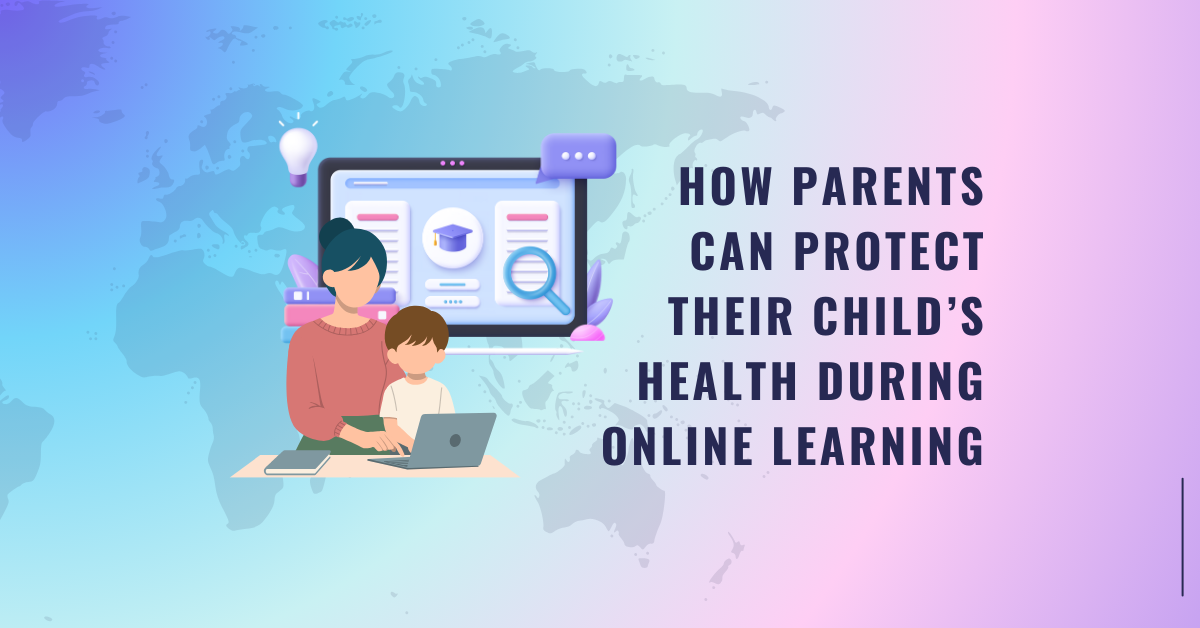

How Parents Can Protect Their Child’s Health During Online Learning
This article addresses the health challenges of online learning, such as excessive screen time, poor posture, and disrupted sleep patterns, which can impact a child’s physical and emotional well-being. It offers actionable strategies for parents, including managing screen time with breaks and optimized device settings, creating ergonomic workspaces to encourage proper posture, and establishing consistent bedtime routines for quality sleep. Real-life examples illustrate how small changes can improve focus, comfort, and academic performance. By adopting these tips, parents can help their children thrive in the digital learning environment while maintaining a healthy balance.
Online learning has become the norm in many households, offering convenience and flexibility but also presenting unique health challenges. Prolonged screen time, poor posture, and disrupted sleep patterns can negatively impact a child’s well-being. Parents play a vital role in addressing these issues and creating a healthy learning environment at home.
This article focuses on three critical areas—managing screen time, promoting proper posture, and ensuring quality sleep—providing actionable strategies and real-life examples to guide parents.
1. Managing Screen Time
Online classes often require children to spend long hours in front of screens. This can lead to digital eye strain, headaches, and fatigue. Without proper management, screen time can also creep into non-learning hours, compounding the problem.
Implement the 20-20-20 Rule: Encourage your child to take a 20-second break, focusing on something 20 feet away, after every 20 minutes of screen use.
Plan Screen-Free Breaks: Use class breaks for activities like walking around the house, drawing, or playing with toys to provide relief from screens.
Optimize Device Settings: Adjust brightness and contrast levels to comfortable settings and enable blue light filters to reduce strain.
Example:
During a typical school day, a child attends back-to-back online classes. To minimize the effects of screen fatigue, parents set up a timer that reminds the child to take regular breaks and look away from the screen. During these breaks, they encourage the child to do simple non-digital activities, like stretching or folding paper crafts. Over time, this routine helps the child feel less tired and improves focus during lessons.
Why It Matters:
Managing screen time reduces the risk of digital eye strain and improves concentration, allowing children to engage more effectively in their studies.
2. Promoting Proper Posture
Many children attend online classes from makeshift setups like kitchen tables or sofas, which can lead to poor posture, back pain, and neck strain. These habits, if left unchecked, can have long-term health effects.
Create an Ergonomic Workspace: Arrange a chair and desk that allow your child to sit with their feet flat on the floor and their back supported. The screen should be at eye level to avoid slouching.
Introduce Stretching Routines: Encourage short stretching or movement exercises during breaks to release tension in the neck, shoulders, and back.
Reinforce Proper Sitting Habits: Gently remind your child to sit upright and avoid slouching during classes.
Example:
A child frequently complains of neck discomfort after a long day of online classes. The parent adjusts the study space by placing books under the laptop to raise it to eye level and provides a supportive chair. Additionally, the parent sets an alarm every hour, reminding the child to stand up and do simple stretches like touching their toes or rotating their shoulders. This setup significantly reduces the discomfort over time.
Why It Matters:
Maintaining good posture prevents physical discomfort and enhances the child’s ability to stay attentive and comfortable during lessons.
3. Ensuring Quality Sleep
Online learning often blurs the boundaries between school and personal time, which can disrupt a child’s sleep patterns. Late-night screen use for gaming or socializing, combined with irregular schedules, can further compromise sleep quality.
Set a Consistent Schedule: Create a fixed bedtime and wake-up time to maintain a healthy sleep routine, even on weekends.
Limit Evening Screen Time: Restrict device usage at least an hour before bedtime. Encourage calming activities like reading, journaling, or listening to soft music.
Optimize the Sleep Environment: Keep the bedroom quiet, dark, and cool, and remove distractions such as tablets or smartphones from the sleeping area.
Example:
A child has difficulty falling asleep at night because they use a tablet in bed after online classes. The parent introduces a new evening routine, which includes turning off all devices an hour before bedtime and switching to reading a story or drawing quietly. Additionally, blackout curtains are installed to create a darker sleep environment. After a few weeks, the child starts falling asleep more easily and wakes up feeling rested, leading to better focus during classes.
Why It Matters:
Ensuring quality sleep is crucial for cognitive development, memory retention, and emotional stability, helping children perform better academically and feel more balance.
Final Thoughts
The health of your child is as important as their academic success. By focusing on managing screen time, fostering proper posture, and prioritizing quality sleep, parents can create an environment that supports both learning and well-being. Small adjustments, such as introducing screen-free breaks, setting up ergonomic workspaces, and establishing bedtime routines, can make a significant difference in your child’s health and overall experience with online learning. A proactive approach to these challenges ensures not only better academic outcomes but also a healthier, happier child.
Comments





.png)

Reply to Comment